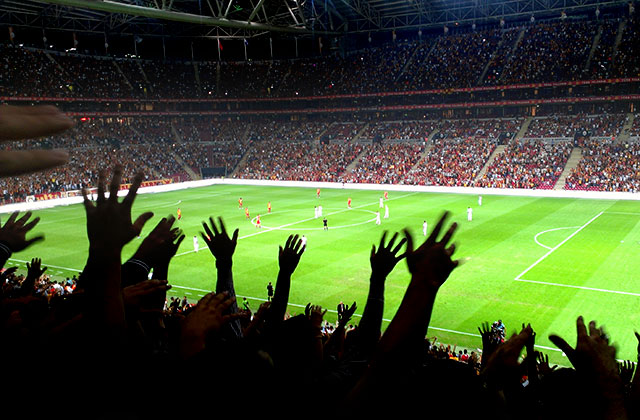It is instructive, when considering the road Carlisle United appear to be on, to consider their opponents today.
Leyton Orient are a club restored; free from old, despised ownership and put on a better footballing path by the late and much-admired manager Justin Edinburgh.
The Os have left crisis behind and found a happier place, and their revival, right now, has them 17th in the fourth tier.
This is the point: it took a serious amount of renewal just to get this far. It shows that, when you fall badly, there is a lot of climbing ahead of you, and only those with the right means can even begin to take it on.
Ideally Carlisle will arrest their bad form, thoughts of the drop will recede and whatever rebuilding lies ahead can be done from a League Two base.
There is little confidence, though, of anything other than a survival battle at present and so the risks are obvious and deep.
If they were to go down, how would they cope? Would they? In a fashion, yes: the club are no longer saddled with expensive player contracts which sudden non-league life would render hard to meet.
That, though, is only a positive in a world of diminished ambition. United might not hit the wall but there are other reasons why, in their current shape, they would find it hard to thrive in a competitive fifth tier.
It is no wonder fans fear a long winter in their supporting lives when they look at the nature of that level and the appearance of clubs who do and don’t make it back.
The only time the Blues have gone to those depths before is a good place to start. Relegation in 2004 was a long time in coming yet by the time Carlisle lost their Football League status there was goodwill as well as sadness.
Before Fred Story’s takeover, John Courtenay had finally backed the right manager in Paul Simpson and from a dismal position there had been a cavalry charge which almost brought off a miraculous survival.
The team had been fundamentally improved. There was a new feel about United’s prospects that would not have been there under Roddy Collins or, in the latter years of his ownership, Michael Knighton.
Because of people like Simpson, Kevin Gray and subsequently Story, Carlisle were accepted and backed when they started as a Conference club. It was not a simple season by any means but they were on the front foot for long enough to make it back up.
Consider others who have bounced back. Tranmere are having a testing time in League One just now but that is hardly surprising after two promotions.
The Wirral club are a better proposition these days for the vigorous stewardship of Mark Palios, and there is certainly a sense of fresh purpose at Prenton Park after some moribund years.
Orient came back in new health. In the National League now, Yeovil are making a decent fist of responding to relegation under new owners and management. Notts County appear to have settled somewhat after the profligate and at times lurid Alan Hardy reign.
Others lower down tell stories of difficulty. There are cases where either the same-old has struggled or rejuvenation hasn’t come so easily. There are no certainties whatever the approach – the eyes water, for instance, at the thought of how much good money has been thrown after bad at Chesterfield – but one measurement is that the best performers have managed to take people with them.
This would be a problem should Carlisle, with their current set-up, drop. The issue over why directors were sitting in a home section at Plymouth last weekend was in itself a non-story (they were seated there with other officials as Argyle’s main stand is out of use) but the reaction was instructive.
When some supporters thought the worst before being furnished with the facts, it reminded you of the steep gradient facing these owners. Sentiments expressed at Tuesday night’s defeat to Northampton also had the feel of patience running low.
Any relegation from this point – 21st in October – would not be gallant. It could only be executed to a backdrop of falling crowds and even more embittered fans. The line would be easily traced back to that finish of fourth in League One in 2008, the time these owners took control.
On that basis it is hard to see how this regime could expect anything other than a worsening of the situation. Only with serious and fundamental change at the top could United consider approaching a lowered status with any sort of optimism.
Short-term, a turnaround on the pitch could arrest some of this. If Steven Pressley finds a way to pull this season and himself out of the fire, the tone would improve. For the hierarchy, though, the sense of an ending would persist, and this autumn’s troubles surely underline that it is time for something entirely new, or at least for a clearer statement of the way forward from all parties (including Edinburgh Woollen Mill, with all their influence around the place these days).
Carlisle’s walk down their present road has, to a degree, been flagged, their “financial sobriety” spending in particular intended to make them more "investable". Issues like their ageing stadium would not be easy for any new owners to solve. Nor can a new focus on the academy come with overnight expectations.
Change is rarely lo with guarantees; that would be seeing things too simply. At the same time, no change at all can be damaging when your trajectory is set.
Should United fall in this condition they would be left bruised and reduced – and, in the absence of reassured fans, gazing up at Everest.
